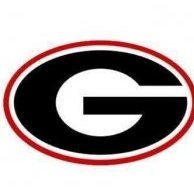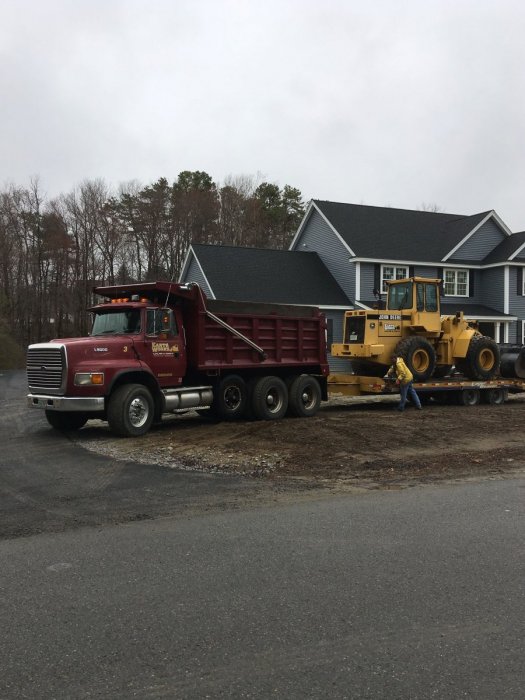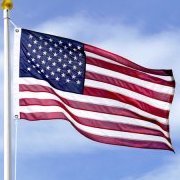Leaderboard
Popular Content
Showing content with the highest reputation on 04/10/2019 in Posts
-
I get that some people prefer sedans to crossovers/SUVs. But take a hard look at the new Escape. It is a sedan with a tall trunk. It is styled like a sedan, rides low like a sedan, will drive like a sedan. It is in essence a sedan with a bit more utility, with the rear window a little further back. OTOH, no way will sedan people want the Maverick, which will be a more traditional off-road-capable rugged crossover. I think it is smart of Ford to produce them both, and I hope they both do very well. I do think that at some point we'll see a true sedan or two back in Ford's North American line-up, but jeez, could the "we're getting out of the car business" reveal have been handled any worse?2 points
-
I would say the A/F students is a non sequitur and a poor analogy that has nothing to do with Cap & Trade which is a "Temporary" solution to fix a problem and has worked in the past. https://cleantechnica.com/2010/06/08/five-good-things-cap-and-trade-has-done-for-you/ Tesla being allowed to sell credits has helped them stay in business and even if "only temporarily" They have been instrumental in pushing the technology and bringing other manufacturers along - perhaps kicking and screaming. However, I don't believe anyone can seriously dispute that without Tesla we would not be here today with all the BEV and PHEV offerings already out and coming in the near future. So if Cap & Trade facilitated that, then I am all for it.2 points
-
Ford Dealers can submit vehicle orders via either the traditional CONCEPS ordering system or the newer WBDO (Web Based Dealer Ordering) system. Fleet orders and/or specification changes must be made via CONCEPS. The WBDO system only accepts stock (Dealer Stock, Demonstrator) orders and all variations of retail orders (Retail, A/X/D Plan, Etc.). Both ordering systems generate error notices and will not display pricing information until any errors are corrected. The CONCEPS ordering system requires the Dealer to manually enter all the order codes… Year, Body Code, Priority Code, Option Codes, etc. The newer WBDO system uses plain language descriptions, etc. and only displays options available for that vehicle’s Model Year, Body Code & Order Code. Retail orders using the WBDO system default to Priority Code “19”. Dealers assign priority codes to each order based on the Order Type. Stock orders are assigned priority codes 20-80, retail orders are assigned priority codes 10-19. Fleet orders are assigned special alpha numeric codes that represent a requested production week. The priority codes determine the order for which vehicle orders are to be selected and/or considered for scheduling. This overview doesn’t consider commodity issues (model, powertrain or option scheduling restrictions) that may be in place for a scheduling week. Commodity issues and/or restrictions can apply at either or both the regional and national levels. The highest priority that a Dealer can use for a retail order is 10. An order with a “10” priority code will schedule ahead of an order with an “11” priority code, etc. This allows Dealers to prioritize the order in which vehicles are scheduled, especially when a Dealer may have multiple retail orders in the USOB (Unscheduled Order Bank). With the WBDO ordering system, retail orders default to priority code “19” so it’s important that a Dealer change the priority code to a lower number if they want the order to be considered for scheduling earlier compared to other orders. Ford provides Dealers with a schedule for vehicle allocation each week on Monday mornings which shows how many vehicles of each model line that the Dealer has allocation for scheduling that week. That same weekly allocation report also includes information on any regional commodity issues or restrictions. On Monday afternoons, the Scheduling Toolbox Report is released which provides more detailed information on commodity issues and scheduling availability on a national basis. On Tuesday mornings, the AM Scheduling Preview Report is available to show Dealers which vehicle orders have been selected or previewed, on an initial basis, to be selected for scheduling that week. The same report is updated and available on Wednesday morning to show any changes based on commodity issues that may have changed. On Wednesday afternoon, the Regional Scheduler issues a notice informing Dealers of the vehicle specifications available for scheduling for orders not already showing on the AM Preview Report. This provides Dealers with information on what vehicle specifications are available for scheduling should they have orders showing on the AM Preview Report that are not what the Dealer wants. Ford generates what are called “SIMS Orders” each week which are Ford’s suggested orders based on commodity information available at the time. If a Dealer has vehicle allocation for scheduling that week and has no Dealer orders in the USOB or orders that don’t meet the commodity restrictions in place for that week, the scheduling system will default to trying to schedule SIMS (Smart Inventory Management System) orders if they meet any commodity restrictions in place. The SIMS orders are available to Dealers online Monday mornings and in print form on Tuesday mornings. Dealers can enter their own vehicle orders or change the Ford generated SIMS orders. Ford Dealers earn vehicle scheduling allocation each month based on reported vehicle sales, current inventory, projected sales, etc. Each month, Dealers usually meet with their Ford Zone Manager to review the allocation offered for scheduling the following month. A Dealer can accept the suggested allocation per vehicle line or change their commitment. Should a Dealer want more allocation than offered for a vehicle line, they can submit a request for supplemental allocation which will be considered based on total allocation available and commitments from other Dealers in their Zone. There are times when Dealers accept less allocation than offered for a vehicle line which makes that allocation available to other Dealers that may be looking for additional inventory. At other times, a Dealer may want more allocation for a vehicle line than Ford has offered. A supplemental allocation request is how Dealers can get allocation for extra inventory. A Dealer needs allocation each week for scheduling for each vehicle line. Even without allocation for a vehicle line, Ford is pretty good at trying to schedule retail orders even when a Dealer doesn’t have allocation that week. When a Dealer knows that they don’t have scheduling allocation, it’s always a good idea for them to provide the retail order information (Body Code & Order Number) to their Ford Zone Manager and the Regional Scheduler. The Regional Scheduler can reprioritize the retail order to priority code “01” which basically forces the Ford scheduling system to schedule the unit ASAP unless extreme commodity restrictions prevent the scheduling. When a Dealer doesn’t have allocation, the Ford Zone Manager may try to get the allocation from another Dealer that is willing to give up their allocation. Ford scheduling is done on Thursday’s but at times scheduling may be carried over to Friday’s due to scheduling, commodity or other issues. Vehicle scheduling confirmations are available on Friday mornings for allocation scheduled on Thursday. With only a few exceptions (Focus RS, EcoSport, Transit Connect) VIN numbers are generated at the time that an order is “Submitted to Plant” for scheduling. The initial scheduling information will show an order scheduled for a production week. Afterwards, the information will be updated to show production for a particular date. Along the process, the vehicle order status information will be updated along with the ETA (Estimated Time of Arrival) at the dealership. Years ago, the ordering process was much easier, with few or limited commodity issues to deal with. Ford’s vehicle scheduling was mostly driven by scheduling and building vehicles based on Dealer orders to meet Market demands. For a number of years now, the ordering process has become more complex and time consuming based on the constantly changing commodity issues and restrictions. It is now not uncommon for allocation to roll over to the following week because manufacturing can’t accurately forecast how many vehicles can be scheduled for production. In many cases, it seems that either because of vendor supply issues or other factors that Ford skews vehicle scheduling to higher content models in order to maximize corporate profits rather than scheduling vehicle production to meet Dealers orders or Market demand. The overall vehicle order process, scheduling and status updates is listed below for reference. · Dealer places order into the USOB (Unscheduled Order Bank) · When Dealer has vehicle allocation for scheduling, orders are scheduled based on Order Type, Priority Code and commodity restrictions. o Scheduled vehicle orders display as “Submitted to Plant” on the Dealer’s daily schedule status report. o Vehicle orders are assigned a VIN number when scheduled except for certain vehicle lines (EcoSport, Focus RS, Transit Connect) o The initial vehicle scheduling notice will include information for the scheduled week of production. The initial ETA (Estimated Time of Arrival) is usually provided within a few days of the scheduling notice. o Dealers can change vehicle specifications for a scheduled vehicle up until the vehicle is “locked in” for production or about two weeks prior to the scheduled build date. Specifications for certain vehicle lines (EcoSport, Focus RS, etc.) cannot be changed once scheduled. § Dealers are limited to making 6 changes to scheduled orders. § Dealers cannot change Order Type, Body Code, Order Code (Package/Trim Level) · Vehicle order is next updated with a scheduled production date. · Vehicle goes into production and shows as “Sent to Plant” on the Dealer’s daily status report. o Vehicle invoices and window stickers are generated and available to Dealers at about this time. · Dealer’s daily status report shows updates on production status. · Vehicle status updated to “Produced” · Vehicle status updated to “Released” meaning that the vehicle has been released for shipment. · Vehicle is loaded on rail car. Dealer is provided with carrier information (Canadian National, Norfolk Sothern, etc.) along with the actual rail car number. · Vehicle status is updated to show arrival at the final rail destination (Ramp 41/Newark, NJ) · Vehicle is received by the car carrier (Fleet Car, Diversified Automotive, etc.) for delivery to the dealership. · Vehicle is delivered to the dealership. Dealers have access to the “Vehicle Visibility” application which provides status updates on a 24/7 basis for any vehicle order. This information is provided to answer the most often asked questions about the vehicle ordering process by the Ford enthusiasts that are members of the Blue Oval Forums. I’ll update this information as conditions warrant.1 point
-
1 point
-
Great video posted of the Explorer. I think it is the best walk around yet. Check out 7:201 point
-
I think this is really focused on cheap cars for the Indian market. Ford can't build them cheap enough to be competitive. Ford will probably continue to build Figo in India for export. Figo is considered "mid size" car in India. But for things that are smaller, Ford is going to rely on Mahindra to supply the engineering and hardware. This is a smart exit strategy because it keeps Ford in India (thru rebadged Mahindra in the new joint venture) but Ford won't have to invest any real money to design and build the cheap cars. Meanwhile, it also keep Ford's manufacturing intact in India so it can still export.1 point
-
That must have been what I saw and my dumb ass equated the two.1 point
-
You're not entirely wrong but you're ignoring the biggest factors in these decisions - cost and opportunities. For Ranger there was a big cost associated with bringing it into compliance for emissions, fuel economy and crash testing and at the time the market was shrinking. So on top of saving all that investment they also were able to close a plant saving even more. And those resources were diverted to other projects. It's not like they're killing vehicles and pocketing the cash. They're just shifting the investment to other things that they think will either be more important or have a much better ROI in the future. And as long as they're still making Focus and Mondeo for ROW it's readily available should they need to bring it back to NA. And the new platforms can easily support cars in the same factories should the market move back that way. If they were killing the unibody car platforms or if they were killing the Focus and Mondeo completely I would be more inclined to agree with you.1 point
-
1 point
-
FCA builds both the 8HP and 9-speed FWD transmissions under license from ZF, the transmission calibrations in the ECU are all done by FCA.1 point
-
Excellent points msm859 sir. Cap & trade definitely has its benefits. Also, Tesla's leadership in designing appealing BEVs (not just 'compliance cars') is a big win not only for them and their customers, but for the whole automotive industry. Tesla's mission to “to accelerate the advent of sustainable transport by bringing compelling mass market electric cars to market as soon as possible" is noteworthy. I don't like the corruption among some public officials and businessmen involved in cap & trade deals though.1 point
-
I agree. The hybrid, Energi, and V6 Sport Ford Fusion versions were probably the best passenger cars without Mustang, ST, or RS in their names that Ford offered in the U.S. But there's no way that the expense needed to redesign these cars and make them more competitive with sedans from other automakers would pay off for Ford. With Ford offering hybrid, PHEV, and turbo V6 powertrains in upcoming SUVs and trucks, these Fusions probably won't be missed much by U.S. customers.1 point
-
It might get built today but it won't be shipped any time soon1 point
-
While I don't disagree with the thought that Ford needs a car here, and it sucks to see them kill a great care like the Fusion, the problem is that you can't keep it around just to have something to sell in a recession. If it isn't making you money now, it's definitely not going to make you money in a recession. Like akirby mentioned, folks won't go back to cars, they will go to smaller CUV's. The fuel economy difference isn't as great as it was before (you have to think percentage changes, not actual MPG numbers), so that's really a non-starter. While I hate to see Ford lose the best sedan they've ever sold here, I think it's the right choice.1 point
-
69% of North American sales are lite truck or "lite truck asdociated"....i agree fusion and FOCUS should have found a home somewhere but they are both DOA and frankly i applaud ford for at least trying to shift product focus to market demand...if you want sedan or hatch mazda gladly accept your business....1 point
-
I’m going to say this and I’ll just say it once... The Fusion should not be killed. I can understand some of the other decisions with killing certain sedans, but the Fusion really is Ford’s “Swiss Army Knife” sedan. With a proper update it could easily maintain good sales numbers and keep Ford as a player in that market. It’s a car that can be sold up and sold down. I remember being told around here nobody wants midsize pickups and T6 will never come to the US. Well look what happened. Fuel prices will go up again and at some point another recession will come. When that happens an affordable roomy sedan like the Fusion with excellent fuel economy will be in demand again... where will Ford be? Years behind the curve like they are with the Ranger. I won’t comment again about this because I know there’s a group around here that gets upset when it’s mentioned, but once again killing the Fusion is a mistake. It’s an excellent vehicle and a respected nameplate. It’s needs some updating, but that’s it. I know it’s all about very high ATPs and very expensive luxury vehicles selling in huge numbers, but when the economy goes to hell again all those $65,000 King Ranches and $90,000 Navigators will be piling up on the lots. We saw it before and it’ll happen again. End of my rant.1 point
-
If Ford can't make money building Fusion in Mexico, it sure as hell ain't going to make money shipping them from Spain. In order to make money on it, Ford will have to charge more money. Hard to charge more money on a car that hasn't changed significantly since 2012...1 point
-
Continue discussion here: https://www.blueovalforums.com/forums/index.php?/topic/66910-problem-w-intermittent-defrost-ac/&tab=comments#comment-10624791 point
-
Well for you guys who miss the old days I ran across this LTS 9000 today dropping a JD loader off at a job site. Had to stop and compliment driver. Owners son and they have had this 350HP 3406 since new-so didn't get date but well over 20 years old. Over 300,000 and he said clutch just starting to slip a little. These guys also have a 400 acre farm in addition to excavation business. In addition to loader their 550 dozer was at site as well as a 315 Cat Excavator. Good conversation with a guy who had a lot of pride in his equipment. And with good reason1 point
-
What models is Ford planning to build at the Fusion plant? If I remember correctly, Fusion sold upwards of 350,000 units annually at its peak popularity. None of the upcoming models I’ve heard of will sell in very large quantities. Seems like it will be harder to make reasonable returns running multiple models in one plant. The assertion you’ve made earlier that Focus will eventually return makes sense as it probably will be necessary to get the plant to capacity (or nearer capacity). JP’s suggest of retaining Fusion/MKZ makes sense - I think Ford could still sell 50 - 75K total annually of theses two models for another five years or more if they would give them the new powerplants, reskin the exteriors and update the interiors. The cost to do this would be modest especially compared with developing entirely new models.1 point
-
I have seen quite a few of the new style VW Jettas running around my area, so while sedan sales are not where they used to be, they certainly aren't dead.1 point
-
Ford sales for the quarter down about 9,000 covering most of the +29,000 drop in car sales, the transition continues, I just wish they would rethink Fusion going away, why not give it the 8-speed auto like Mondeo now has or even just use the Mondeo 5-door hatchback.. MKZ sales are still strong so I wonder if a future merge of it and Continental on one SWB/LWB vehicle would be a more effective plan than killing both.1 point







.thumb.jpg.a7ce979b6b5e2dc34f47465a1e30e031.jpg)





